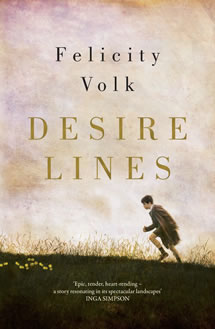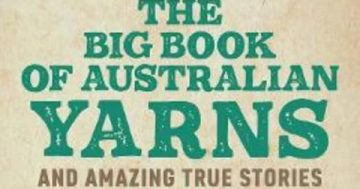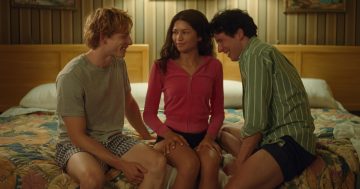Reviewed by Robert Goodman.
By Felicity Volk, Hachette, $32.99.
 Felicity Volk’s second novel, Desire Lines, is a romance that spans the history of the second half of the Twentieth Century. Following a framing tale set in 2012, Volk drops back to 1952 to follow the lives of two characters whose lives will intertwine through the years. Along the way they will witness or experience some of the seminal moments of Australian modern history.
Felicity Volk’s second novel, Desire Lines, is a romance that spans the history of the second half of the Twentieth Century. Following a framing tale set in 2012, Volk drops back to 1952 to follow the lives of two characters whose lives will intertwine through the years. Along the way they will witness or experience some of the seminal moments of Australian modern history.
Are you still a liar? The first line of Desire Lines is the question that Evie sends to Paddy every year on their “anniversary”. In this case it is 2012 and she is in Longyearbyen in the Arctic Circle overseeing the delivery of Australian seed stock to a frozen, global seedbank. Following the ceremony she has planned to go with a guide to explore some ice caves, a trip that finds her stuck for the night and contemplating her past.
The tale then goes back to 1952 – Paddy is a seven year old living in London with his Italian mother and abusive, Irish father. Before long his struggling parents have to give him away to an orphanage and not long after that he is shipped off to Australia with a group of other abandoned children to be sent to “farm schools”. At the same time, young Evie has a much more privileged life in Canberra, spending time with her grandmother and not only learning about plants but the value of telling the truth. After an extended exploration of their childhoods and adolescence Paddy and Evie finally meet and almost immediately fall in love. But the path of this relationship is anything but smooth and both end up married to other people before a chance meeting brings them together again. While Evie leaves her husband, Paddy cannot bring himself to break from his family and the affair continues illicitly over the decades that follow.
Desire Lines can best be described as a historical romance. The history of the characters, the love story at the centre of the book and the occupations of the protagonists (Paddy becomes a renowned architect and Evie becomes a landscape architect and horticulturalist) give Volk the scope to range over some critical elements of Australian history. This includes the story of the “stolen generation” of British children shipped to Australia and the 1950s, many of whom were abused mentally and physically, the construction of the High Court and then later the Mabo land rights decision handed down there, Australia’s Bicentennial celebrations in 1988 and what that meant to both indigenous and non-indigenous Australians.
There is plenty of detail here of both character, events and locations. Places like Canberra, the Blue Mountains outside of Sydney and Longyearbyen are evocatively described. But this detail tends to hamper the flow of the book. For example, the book is almost half over before Paddy and Evie even meet as teenagers. And while Paddy’s childhood is pivotal to his development as an adult, the same cannot necessarily be said for Evie despite the attempt to draw some lifelong character traits from specific events in her childhood.
The telling of history in Desire Lines is formed around its central romance. The tale of Australia is told in the background as the relationship progresses, but the two stands of this tale do not always talk to each other. A focus, for example, on key events relating to Aboriginal land rights and self-determination, is not reflected in the journey or work of the protagonists, with the exception of Evie’s interest in indigenous horticulture. So that while these elements are interesting and important they fail to resonate with either the plot or characters. More central is the lifelong impact of trauma suffered by children like Paddy, sent to Australia much like the convicts were, to work the land for others. While on the outside Paddy is a success story, the scars of this experience run deep. This is an important story, one that many Australians were unaware of until a formal government apology in 2009, told compassionately.
Desire Lines is one for the hopeless romantics, who respond to tales of lifelong romances played out against the vicissitudes of life. It also documents and explores some important milestones in Australian history which many Australian readers will be familiar with but will be of particular interest for international audiences. But the story of those children sent from Britain in the 1950s (also told in films like Oranges and Sunshine) is one that many Australians may only be passingly aware of making tale an important one for local audiences.
This and 500 more reviews can be found at www.pilebythebed.com.











